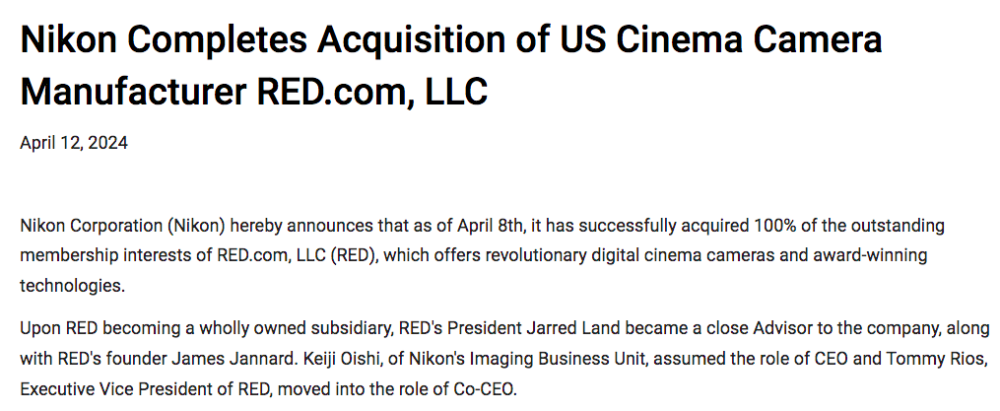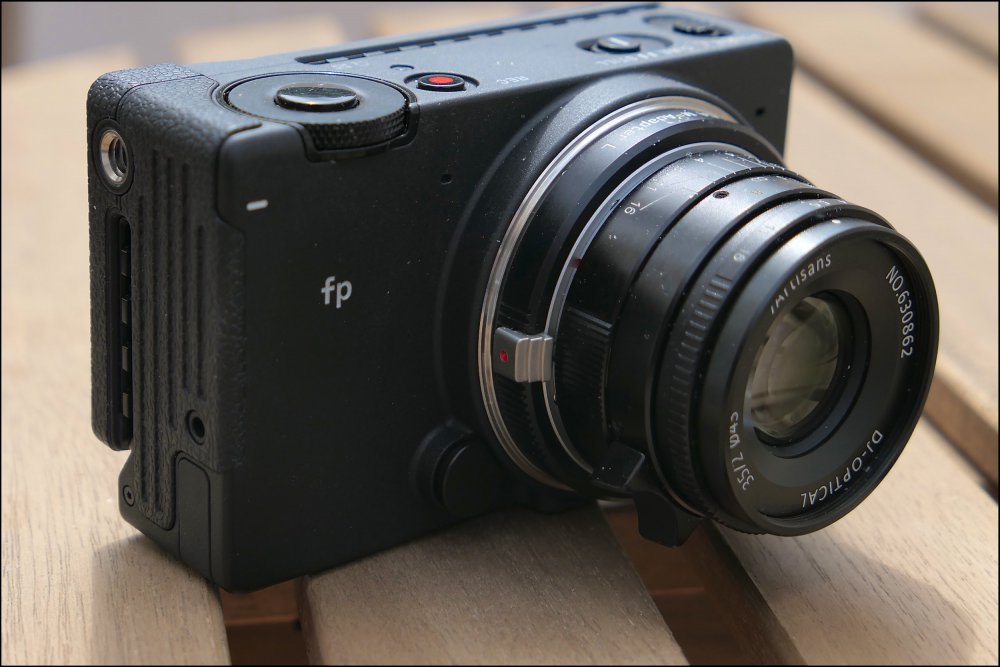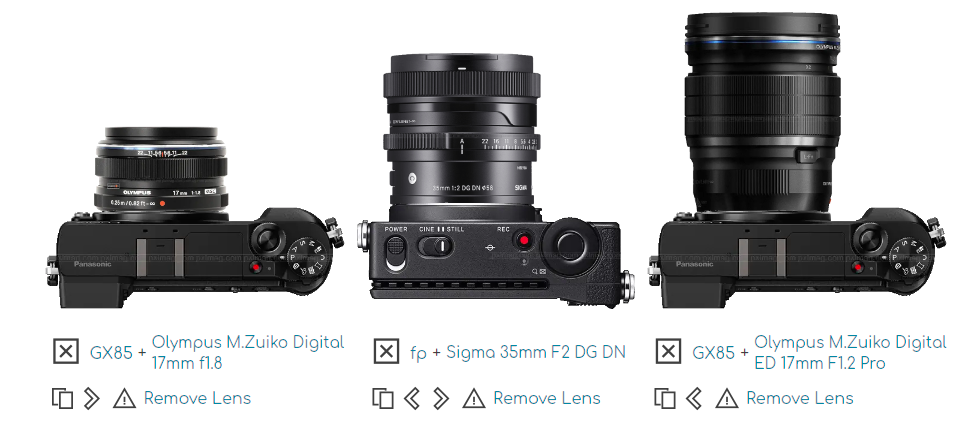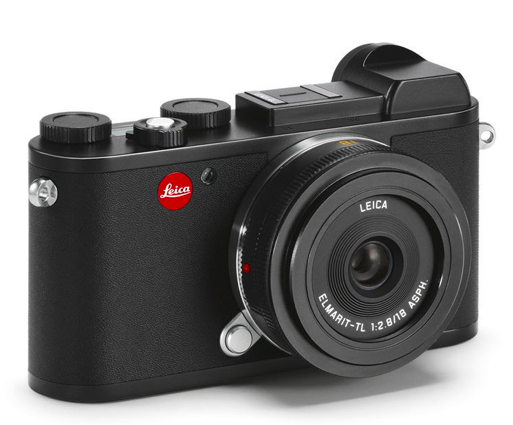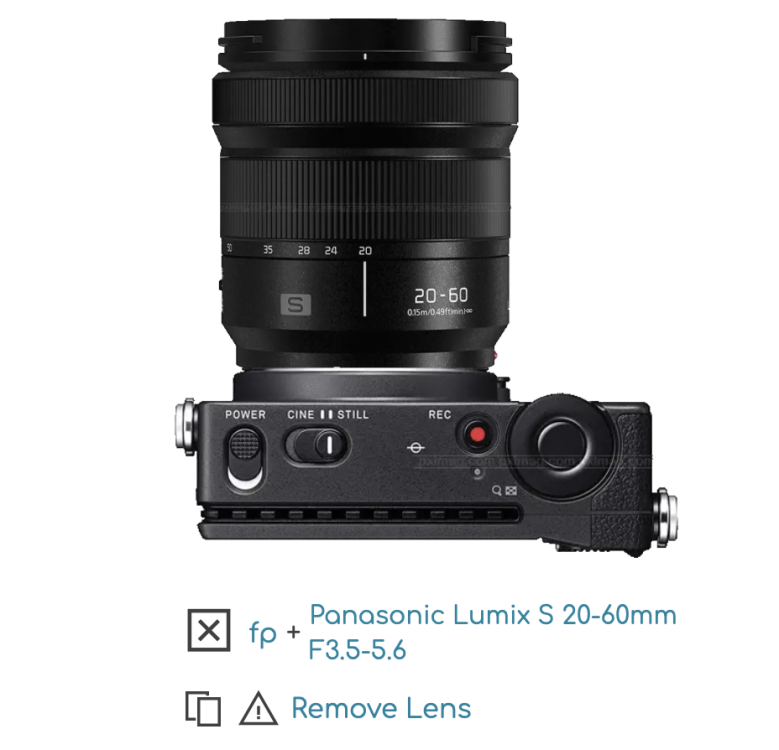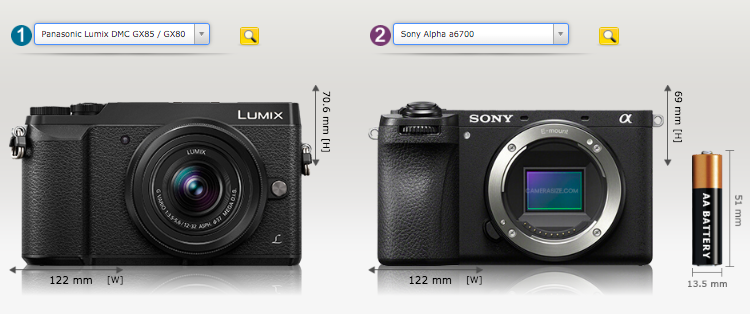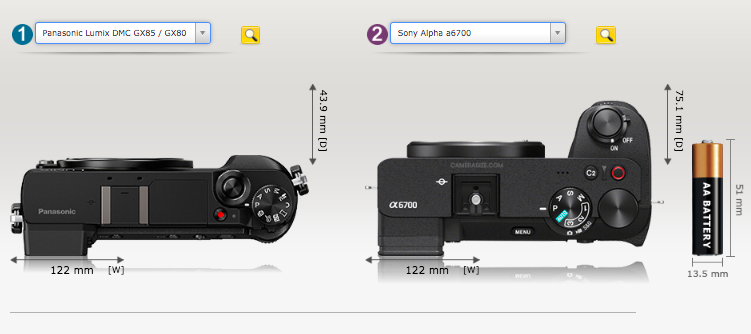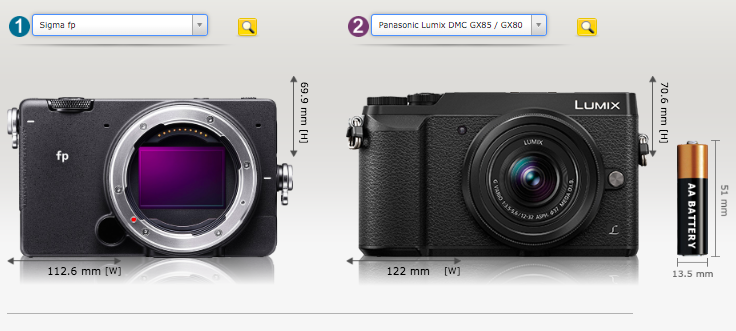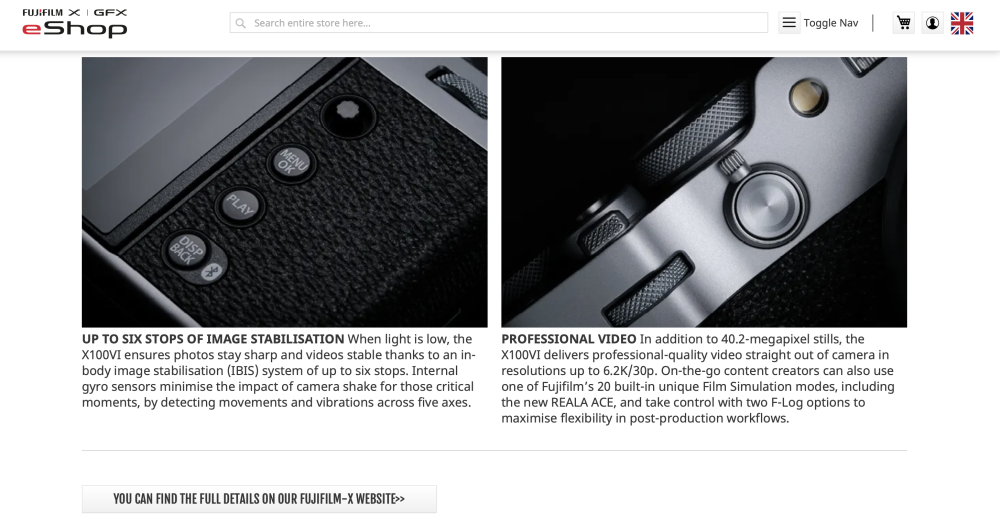-
Posts
6,081 -
Joined
-
Last visited
Content Type
Profiles
Forums
Articles
Everything posted by BTM_Pix
-
Well, the takeover is officially complete now and no executive roles for Jannard or Land so, with that, hopes fade for the release of the Nikon BASTARD or Nikon CRUSHER Full press release here : https://www.nikon.com/company/news/2024/0412_imaging_01.html
-
“No changes to product support, warranties or policies” does leave plenty to infer about where there could be changes. Notably product development, pricing and manufacturing.
-
The camera itself can’t be powered over USB but that hub does allow the zoom on demand to be used simultaneously with SSD recording so that is a positive, albeit that BM doesn’t specify it in the manual. He reports no issues with doing it so that’s all we have to go on and it might well be that BM doesn’t specify it because there are a LOT of USB hub/SSD combos that people could use that would make it a support nightmare. The zoom on demand handle is very much a sledgehammer to crack a nut to get that external control though as it certainly takes away the Micro element and its primary function is only compatible with a few very average lenses. The hub usability (difficult to refer to it as compatibility until BM official support it!) does open up the possibility of them making a more appropriate form factor interface for some external control. Or maybe someone else will if there is sufficient demand from people buying the Micro as a cinema camera…
-
Yeah, they improved it’s performance over firmware updates but it’s AFS only and still fairly basic, hence why I developed the AFX to give it AF-C without having to use the internal CDAF. Its really bizarre why they excluded BLE on the new micro as it has closed the camera to products such as AFX and other external controllers, something that is actually even more applicable to this form factor as it has such limited direct control. Obviously it’s a differentiator to keep it in the realm of being a studio camera - hence why it can be fully controlled through an ATEM - but it’s a shame nonetheless for people who want it to do double duty as a cinema camera. It has three great uses for the USB-C port in that you can use it to record BRAW to an SSD, connect BM’s excellent and pretty affordable focus demand controller and finally connect an Ethernet adapter to enable it to be controlled with a REST API. Unfortunately, with it only having a single port you have to pick only one of those features when it’s easily foreseeable that you might want to use at least two of them simultaneously. For the purpose that they are offering it, the camera is absolutely fantastic it’s just frustrating that it is so close to being a bit more things to a bit more people.
-
The P4K does have CDAF AF-S, does this variant have AF-C then?
-
If you do go down the ATEM path then I think you might be interested in my new product as it addresses exactly this type of operation, amongst many other things.
-
Try PhotoJoseph’s complete 3 1/2 hour masterclass here: The Mini Pro versions of the ATEM have the MultiView option for the HDMI output and the Extreme has the hardware macro buttons. Audio delay is adjustable per channel. If you can stretch to the ISO version of the Mini Pro or Extreme then each individual channel and the master are recorded to SSD along with a project file of all the cuts that you can then load directly into Resolve to re-cut it. If you are using BM cameras then you can then automatically swap in the original camera media and there is now a workaround (see PhotoJospeh’s channel) to do this with any camera. I have designed two products for the ATEM that will be released at the end of April and one of those will be of interest in terms of creating custom functionality for DVE etc as well as offering more direct control of existing functions that do not have dedicated hardware input on the control surface.
-
MPB? They've had a bunch of them at great prices recently and it is so much bang for the buck.
-
Not 100% of riders. No, you’re trying to prove your own point that 100% of riders were using. Floyd Landis’ TdF title in 2006 went to Oscar Periero just as Alberto Contador’s went to Andy Schleck in 2010 so that proves the point that they only had to go one place down to find a rider that they could give it to. I’d venture that the Armstrong “asterix” years are more to do with UCI/ASO complicity and/or legal issues that are still ongoing. Anyway, enough of cycling, I’ve derailed this thread enough so will politely withdraw from the sport vs spectacle conundrum.
-
Likely none. The issue at hand is being lukewarm about when someone is caught. That just doesn’t chime with me personally in terms of being sport. Transparency? Armstrong colluded with the UCI to cover up his positive tests FFS.
-
It is indisputable that they were the leading systematic doping team. As for their other successes in the other Grand Tours or Classics then, again, it was all whilst cheating. If Red Bull’s domination was achieved through cheating (that marginal financial doping issue aside)then you might have a point.
-
I’m not sure as a hardcore fan of any sport how you could be lukewarm about systematic cheating as, well, it doesn’t seem very, erm, “sporting”. From my personal point of view as a pro sports photographer covering Tour de France in that era though I’m far from lukewarm about having sat in press conferences being lied to by him and watching him ridicule and soil the reputation of David Walsh and Paul Kimmage. Or Emma O’Reilly. I’m also sore that in Armstrong’s case, unlike all the other ones I’ve covered, that I get zero residuals from my “winner of stage x” or “winner of TdF x” images 🙂 I might be being old fashioned here but I’d give it to the highest placed cyclist that wasn’t using PEDs. I have some sympathy with the “well they were all at it” aspect so, fine, let everyone do it and have a special event. Just don’t call it sport when it’s only being used by some of the field.
-
Not RED per se but it’s founder Jannard’s role in suppressing the truth about Armstrong’s doping. The documentary tells the whole story so if you have a VPN it’s worth watching if region blocked. A summary of it is here https://www.abc.net.au/news/2014-07-02/sponsor-turned-blind-eye-to-lance-armstrongs-doping/5564074 “Turning a blind eye” is doing some heavy lifting there.
-
Aiding and abetting the biggest sporting fraud of all time.
-
Well he certainly did know very accurately didn't he !
-
Its definitely a puzzler about what will happen there. I'm guessing Canon has a veto/sign off on new models that use it which would mean they could carry on as is but who knows really as I don't think it has ever been confirmed what the actual agreement is between RED and Canon. From the outside it would seem obvious its swapping compressed internal RAW for mount and AF technology but who knows if that is the extent of it and what the fine print is. Well, I'm guessing Nikon must know by now though ! Could be sensor tech as well to free Nikon up from Sony. The presumption is that nothing will change at RED in terms of them being an ongoing concern doing what they do now. A few days ago RED released a mini EVF that is $4.5K dollars so there is definitely some scope for Nikon to make RED cameras a LOT more affordable. Nice to see he's named his son after a Bob Marley record. Maybe they want to do with the Z8/9 what Canon did with the R5 and bring out a cine version of it like the R5C. I could certainly see a Z8C turning a few heads. If they ran those products through the RED brand (a Toyota/Lexus style) then I could see it turning even more heads. Its a bit of wild cultural disconnect between Nikon and RED though in terms of keeping RED going as is with that, erm, "style" of theirs so maybe it just is for the IP. Can't really see Nikon releasing a new camera called the Nikon BASTARD or Nikon CRUSHER or some such.
-
It’s certainly a plot twist in the “how can Nikon get round RED’s patent for internal RAW” story. And likely not good news for Canon extending their current arrangement for it with RED either. Funnily enough they do. https://www.nikonlenswear.com/in/sunglasses/
-
I think the closest that you're going to get with that will be the Sigma contemporary range. They are behemoths compared to what you can get in MFT but, actually, when you line it up against an MFT package of actual equivalence (or slightly less in this case) then the story changes. Its just that with MFT you have the option and thus far in L mount then you don't. Unless.... You don't mind sacrificing a daft amount of money and going APS-C and picking up the Leica range that they made for the TL and CL which are very compact indeed. Leica have abandoned APS-C and Panasonic seem content to sit either side of it with their MFT and L mount so it might be a place that Sigma could carve a niche for themselves with an APS-C body, particularly as they have an excellent set of fast primes and a zoom for it. With the trials and tribulations of them trying and thus far failing to make a full frame Foveon, it could well be that it would find a home for an interim APS-C version in a rehoused Fp. Realistically, though, the only current way to get pancake-ish full frame in L mount is to go for the manual focus route of using M mount on them like I've done on mine here with a 35mm f2. As @MrSMW has just posted, the E mount system is currently better served with compact FF lenses particularly in regard to 3rd party manufacturers like Samyang. The closed shop nature of the L mount alliance (in terms of electronic lenses at least) is definitely a hindrance in that regard.
-
The new 28-200 is roughly the same size and weight as the 20-60mm so it is a lot more balanced to the Fp. It has a a great range and having the OIS offers an interesting proposition of it turning the Fp into a very compact Cinecorder. However, it is very, very slow on the long end though, particularly for only 200mm. Not that ultra shallow depth of field is the be all and end all of course but f7.1 is a bit of a stretch. Of course the swing to that particular roundabout is that you don't have to worry so much about the camera not having sentient AF !
-
I think I droned out these exact same thoughts in the G9ii or some similar thread about MFT but I'll repeat them anyway 🙂 In terms of a new camera, I honestly think its time to give up on Panasonic producing that specced up GX85 that everybody knows they could make if they wanted to. In the absence of the "new" Olympus not doing anything to move the MFT story along either in terms of a compact then something like the A6700 is that camera now. As well as being a larger sensor, it ticks every box of what is being asked for in terms of being dual native ISO, 10bit 4:2:2 internal, IBIS, class leading AF, LOG and a very good out of the box profile in S-Cinetone. Very flexible mount in that it can even take your MFT manual focus lenses and has very good options like the Meike EF>E which will give you full AF of Canon lenses with the bonus of variable ND. In terms of native lenses, there are a lot more E mount options now compared to when, say, the GX85 launched and it is seeing more releases every month unlike MFT which is slowing now. The writing was on the wall when Sigma expanded their compact f1.4 prime lineup with the 56mm and didn't release an MFT version. Their two compact contemporary f2.8 zoom lenses are also not available in MFT of course. Size wise there isn't anything in it from the front and the GX85 is actually a fraction bigger. The A6700 is deeper but most of that is attributable to the chunky grip which, to me, is no bad thing as the GX85 is not chunky enough for me and the A6700's incorporates a dial too. Price wise, it is a lot more expensive than the GX85 was on launch but so is everything else now and it is significantly cheaper than Panasonic's latest MFT camera, the G9ii. The virtual shark jumping price of the G9ii makes me suspect that even if Panasonic did produce a new specced up GX85 that it would likely be at least as expensive as the A6700. If you want to be closer spiritually to a combo of the GX85 and OG Pocket then, if you embrace the quirks, the Sigma Fp is well worth a consideration particularly as the used prices are dropping. Personally, I'd add the EVF-11 as it is so much nicer to shoot with whilst at the same time you can remover it and leave it in your pocket if you need to go smaller. The tilt action of the EVF enables you to press the camera to your chest to offer a lot more stability when handholding. That is important because you lose IBIS of course but you gain RAW and, as with the AF of the Fp, the internal 8 bit 4K is far more serviceable than people give it credit for and if you only need HD then its 12 bit internal. As with the EVF, the modularity means that if you want more capability in terms of bit depth then you can add it easily and discreetly. The Fp has largely been forgotten/written off by an awful lot of people around the world but in Japan, in particular, there is some absolutely lovely imagery being uploaded to YouTube every week from it.
-
And yet here he is last month shilling a product that enables you to automatically edit your weddings using.....yep...AI. I have to say that the use of AI to isolate the voice better in the clip he is criticising is a far better use of it than this editing one.
-
One. Including yourself.
-
Its horses for courses when it comes to viability. Its a compact sealed unit so it was never going to be a camera for doing 60 minute recordings with. Recovery time and mitigation is just as important as record time for this type of camera as is usage so it needs real testing under controlled conditions. For what I'd use this camera for then even it was only what you are reporting as maximum of 10 minute takes that would actually be more than adequate for me. For you ? That's up to what YOU were going to use it for.
-
It isn't listed in the specs for some reason but it does have F-log and F-log2. This is from their online store.
-
Yeah, considering the hype and price gouging that was happening with its predecessor, I expected it to be more expensive.



